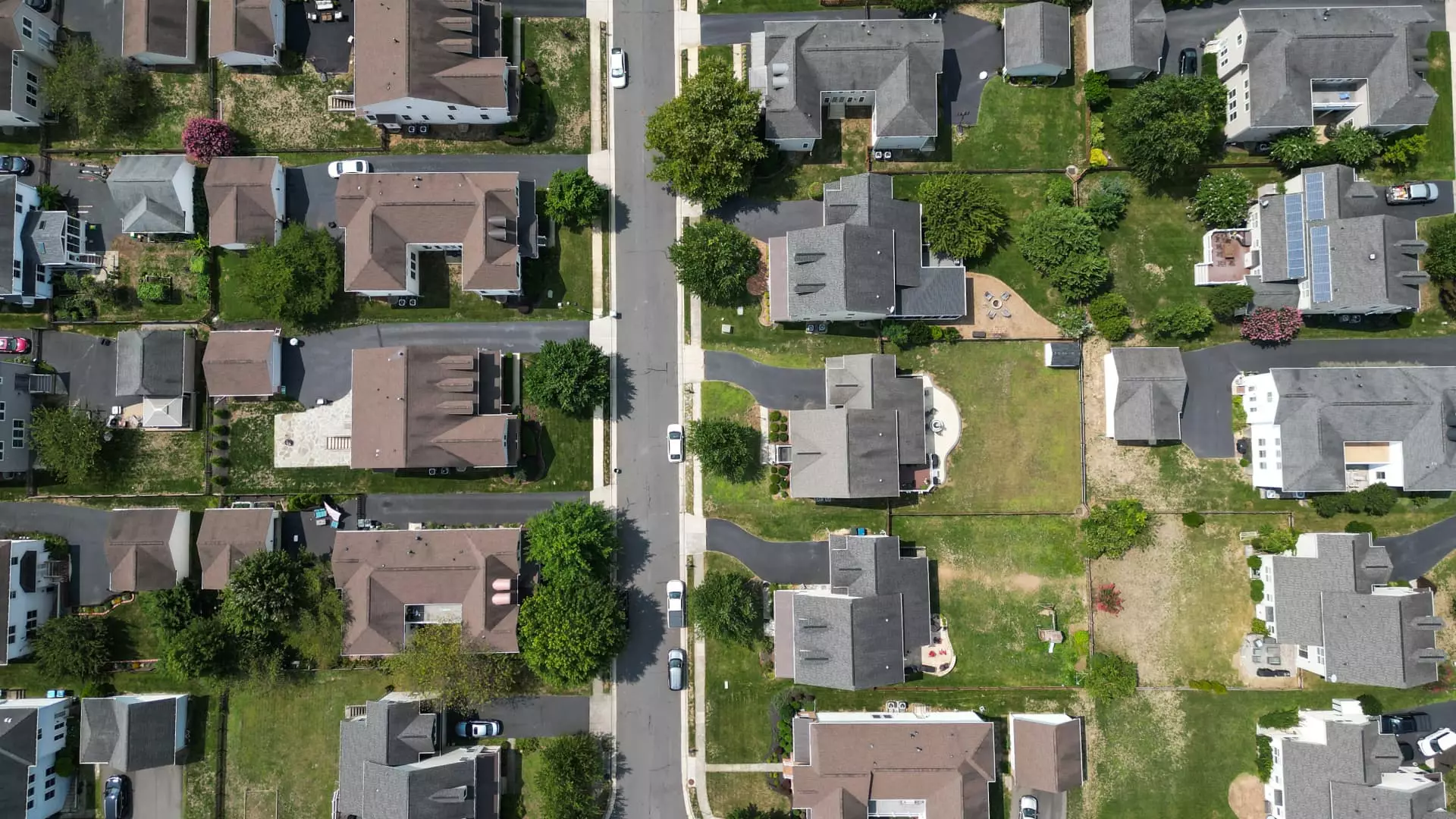The recent decline in mortgage rates, while seemingly a positive development for homeowners and prospective buyers alike, masks a deeper, more troubling reality: a fragile housing market teetering on the edge of instability. As rates dip to their lowest levels since April, there’s an understandable rush among homeowners to refinance and secure immediate savings. But this surge in refinancing activity, driven by falling rates, can be deceptive, revealing a misguided sense of financial security that ignores the underlying risks. When people refinance or take on larger loans, often with little regard for long-term sustainability, they risk overleveraging themselves in a market that remains vulnerable to economic shocks.
The increase in average loan sizes—now surpassing $313,700—signals a worrisome trend: borrowers with larger debts are particularly sensitive to rate changes, yet many are seemingly blind to the potential consequences of increased financial exposure. When economic conditions shift unexpectedly, these borrowers could find themselves in worse shape than before, especially if their income or credit circumstances decline. This unwarranted optimism driven by declining rates could foster a false sense of security, ignoring the inherent volatility of the housing market and broader economic environment.
The Disconnect Between Market Optimism and Fundamental Stability
Despite the encouraging numbers, the reality on the ground tells a different story. Purchase applications have remained almost static, increasing by a mere 0.1%, suggesting that prospective homebuyers are hesitant to enter the market. This stagnation illustrates a crucial point: falling mortgage rates alone do not suffice to ignite robust demand. Uncertainty—whether stemming from inflation fears, political instability, or economic policy ambiguities—has curbed the enthusiasm of potential buyers. The fact that purchase activity remains subdued indicates a lack of confidence, not affordability issues per se, but a deeper distrust in the stability of the housing and economic landscape.
Moreover, the slight uptick in overall demand for refinancing, while seemingly positive, could be a double-edged sword. When borrowers aggressively seek to refinance their loans, especially in an environment of economic uncertainty, it could signal desperation rather than opportunism. This behavior might foster a cycle of rising debt levels, making the housing market increasingly susceptible to shocks—be it rising interest rates in the future or possible economic downturns. The market’s current buoyancy risks being a temporary illusion, masking vulnerabilities that could rapidly surface if economic conditions take a turn for the worse.
Who Truly Benefits in This Fragile Recovery?
While it’s tempting to celebrate the recent decline in mortgage rates as a sign of economic recovery and housing market vitality, such enthusiasm overlooks the uneven distribution of benefits. Borrowers with substantial loans and larger assets are the primary drivers of refinancing activity, not first-time homebuyers or those on modest incomes. This disparity highlights a widening gap in financial resilience, where the wealthiest in the housing ecosystem capitalize on low rates, leaving behind those who struggle to enter the market or maintain their homes.
Furthermore, these dynamics could deepen social inequities. When lower-income households are excluded from participation in the housing market due to stagnating wages and persistent affordability issues, the promise of homeownership—long considered a cornerstone of economic stability—is further deferred for the majority. Instead of fostering a broader, more inclusive housing market, current trends risk entrenching existing divides, exacerbated by policies that may favor refinancing over sustainable, long-term housing affordability.
In summation, while falling mortgage rates offer short-term relief and an optimistic veneer of economic recovery, they conceal fundamental issues: an overreliance on debt, cautious consumer confidence, and growing disparities. The housing market, much like the economy at large, needs more than just low rates to foster genuine stability—what it requires is prudent oversight, policies that promote affordability, and a realistic appraisal of economic resilience. Without these measures, the recent signs of vitality risk being little more than fleeting mirages in a landscape fraught with long-term challenges.

